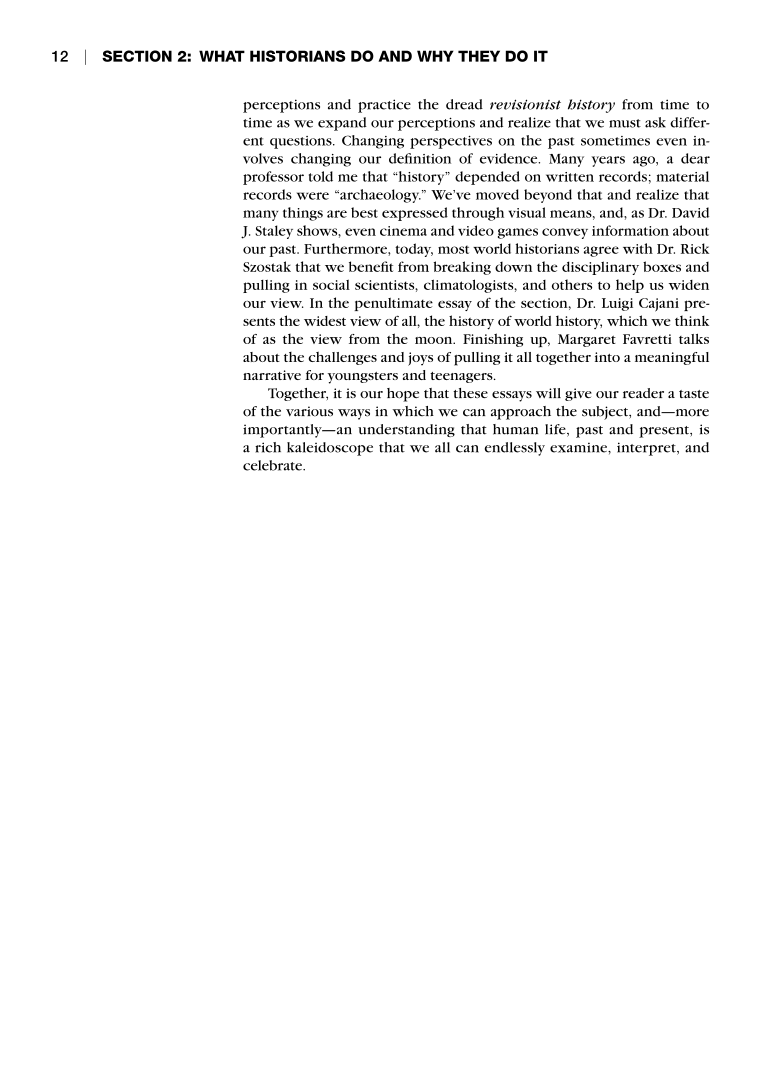12 | Section 2: WHAt HiStoRiAnS Do AnD WHY tHeY Do it perceptions and practice the dread revisionist history from time to time as we expand our perceptions and realize that we must ask differ- ent questions. Changing perspectives on the past sometimes even in- volves changing our definition of evidence. Many years ago, a dear professor told me that “history” depended on written records material records were “archaeology.” We’ve moved beyond that and realize that many things are best expressed through visual means, and, as Dr. David J. Staley shows, even cinema and video games convey information about our past. Furthermore, today, most world historians agree with Dr. Rick Szostak that we benefit from breaking down the disciplinary boxes and pulling in social scientists, climatologists, and others to help us widen our view. In the penultimate essay of the section, Dr. Luigi Cajani pre- sents the widest view of all, the history of world history, which we think of as the view from the moon. Finishing up, Margaret Favretti talks about the challenges and joys of pulling it all together into a meaningful narrative for youngsters and teenagers. Together, it is our hope that these essays will give our reader a taste of the various ways in which we can approach the subject, and—more importantly—an understanding that human life, past and present, is a rich kaleidoscope that we all can endlessly examine, interpret, and celebrate.
Document Details My Account Print multiple pages
Print
You have printed 0 times in the last 24 hours.
Your print count will reset on at .
You may print 0 more time(s) before then.
You may print a maximum of 0 pages at a time.

























































































































































































































































































































































































































































































































































































































































































































































































































































































































































































































































































































































































































































































































































































































































































































































































































































































































































































































































































































































































































































































































































































































































































































































































































































































































































































































































































































































































































































































































































































































































































































































































































































































































































































































































































































































































































































































































































































































































































































































































































































































































































































































































































































































































































































































































































































































































































































































































































































































































































































































































































































































































































































































































































































































































































































































































































































































































































































































































































































































































































































































































































































































































































































































































































































































































































































































































































































































































































































































































































































































































































































































































































































































































































































































































































































































































































































































































































































































































































































































































































































































































































































































































































































































